Waste & Perceptions
Waste & Perceptions
Exhibition London College of Communication (UAL) What Bachelor Thesis When 2019
To what extent can an alteration in the perception of the value of water plastic bottles reduce the amount of waste?
The urge to tackle plastic pollution has become a growing anxiety in modern societies. This research paper examines the relationship between perceptions and waste within the millennial population in London. It questions the importance of our beliefs in accelerating the process of discarding.
Data was mainly obtained from quantitative analysis and included a survey carried out on thirty participants. By focusing on the meaning of plastic water bottles, it examines the importance of the semantic, economic, and aesthetic values in influencing people’s consumption and disposal choices.
To be more precise, this paper questions how the use of a downgraded language, the existence of a mass-material, together with the function of a poor design have affected our usage of plastic bottles. With a view to reducing plastic waste, it then explores how a reassessment of these values could encourage people to reuse or recycle their empty beverages.
Exhibition London College of Communication (UAL) What Bachelor Thesis When 2019
To what extent can an alteration in the perception of the value of water plastic bottles reduce the amount of waste?
The urge to tackle plastic pollution has become a growing anxiety in modern societies. This research paper examines the relationship between perceptions and waste within the millennial population in London. It questions the importance of our beliefs in accelerating the process of discarding.
Data was mainly obtained from quantitative analysis and included a survey carried out on thirty participants. By focusing on the meaning of plastic water bottles, it examines the importance of the semantic, economic, and aesthetic values in influencing people’s consumption and disposal choices.
To be more precise, this paper questions how the use of a downgraded language, the existence of a mass-material, together with the function of a poor design have affected our usage of plastic bottles. With a view to reducing plastic waste, it then explores how a reassessment of these values could encourage people to reuse or recycle their empty beverages.
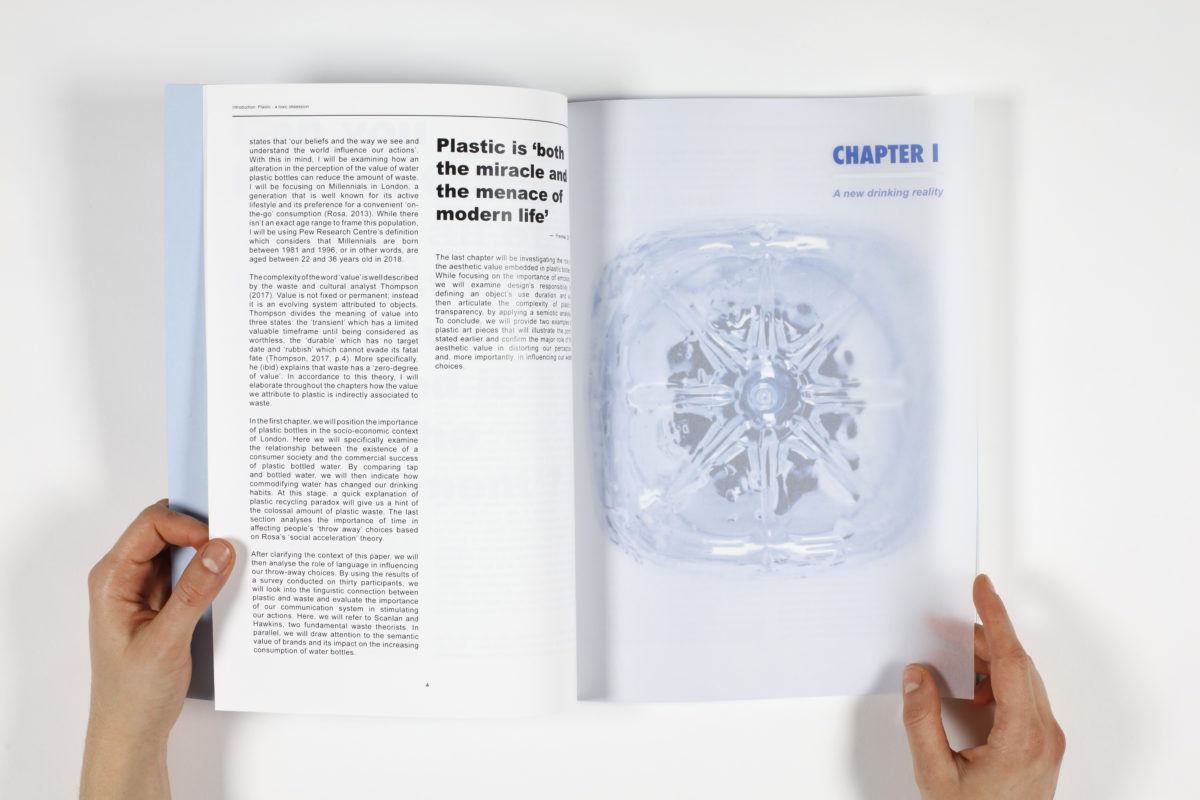
In parallel to my secondary research, I conducted 2 observations, to better understand people's relationship with plastics. This helped me set the background of my thesis.
In parallel to my secondary research, I conducted 2 observations, to better understand people's relationship with plastics. This helped me set the background of my thesis.
Observation 1
The emergence of plastic has changed our lives in many ways. In particular, it has transformed the way food items are sold and consumed. According to Thomas S. (2018, p.219), a reporter from the Creative Review, the packaging industry accounts for the biggest sector of plastic production.
One of the key findings from my research was that people are finding it so hard to detach themselves from plastic, because of its effectiveness in preserving food.
However, does plastic really extend the shelf life of food?
I decided to verify it myself by observing and comparing the decomposition of 8 different fruits and vegetables - both wrapped in plastic and without. The food was kept for a timeframe of 26 days, at a temperature of about 5 degrees.
In response to this photographic study, I created a visual essay that evaluates the potential of plastic packaging within the food industry. I wanted to question the efficiency of packaging in extending the shelf-life of vegetables and fruits.
My research is based on food items sold at Tesco. I have chosen to work on this specific brand because of its influential market size. Tesco is the biggest supermarket chain in the UK (2017, BBC), and thus an influential plastic producer.
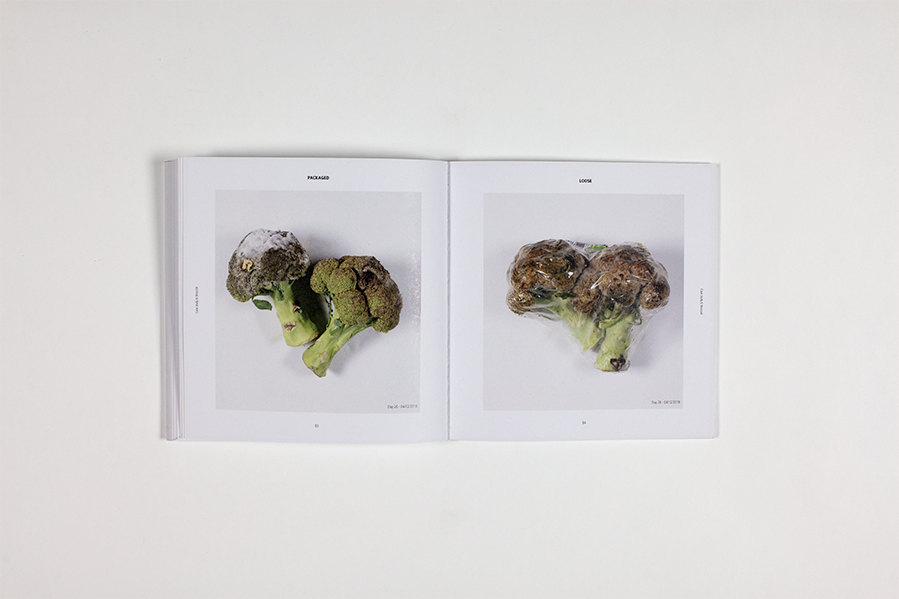
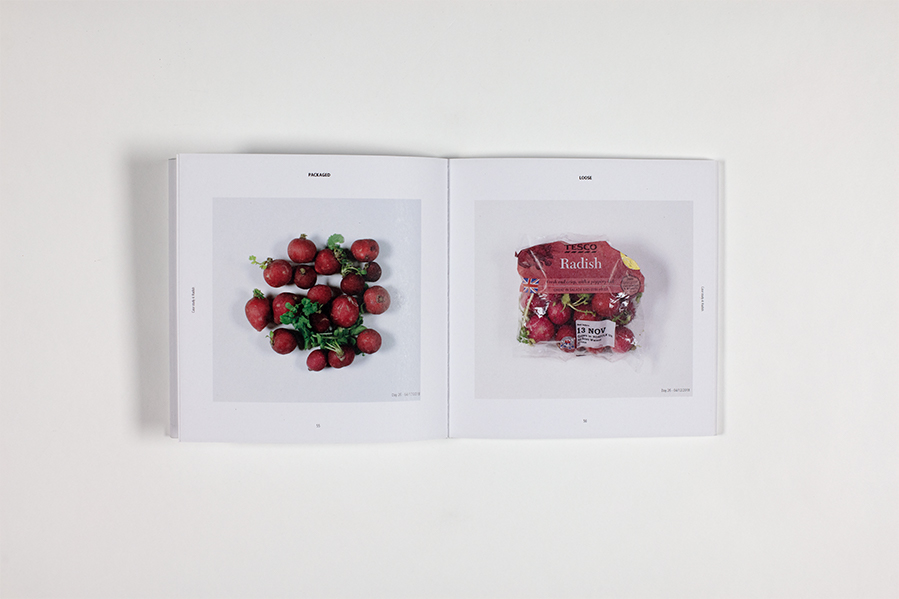
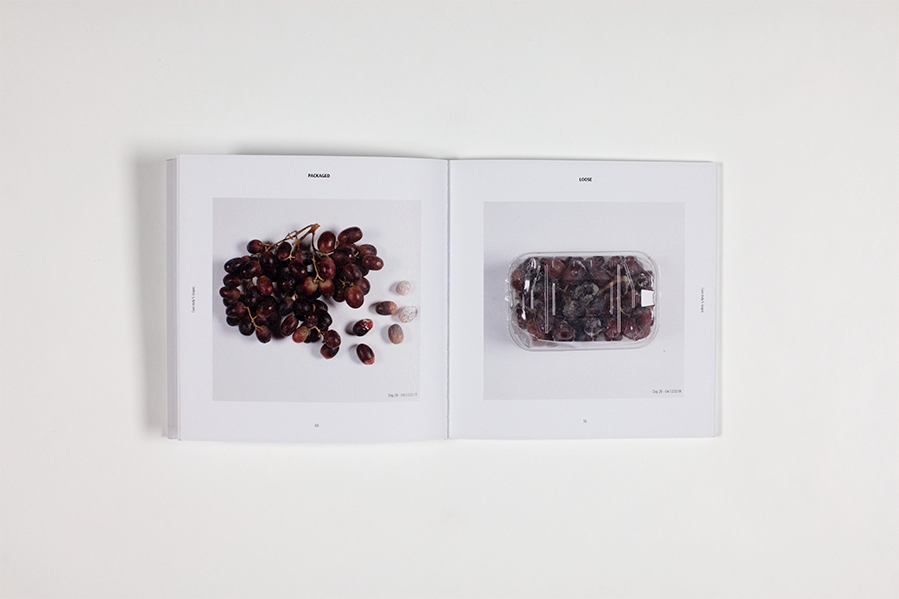
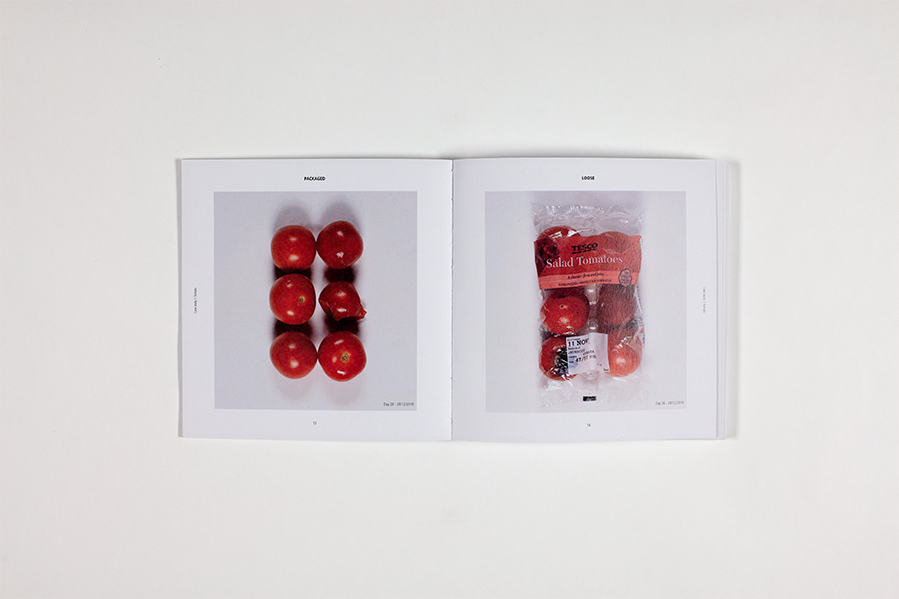
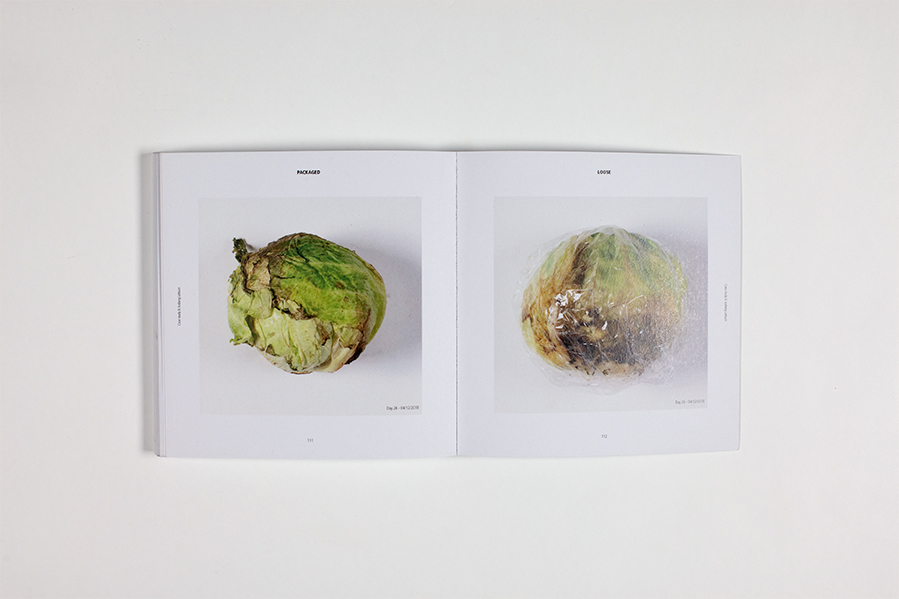
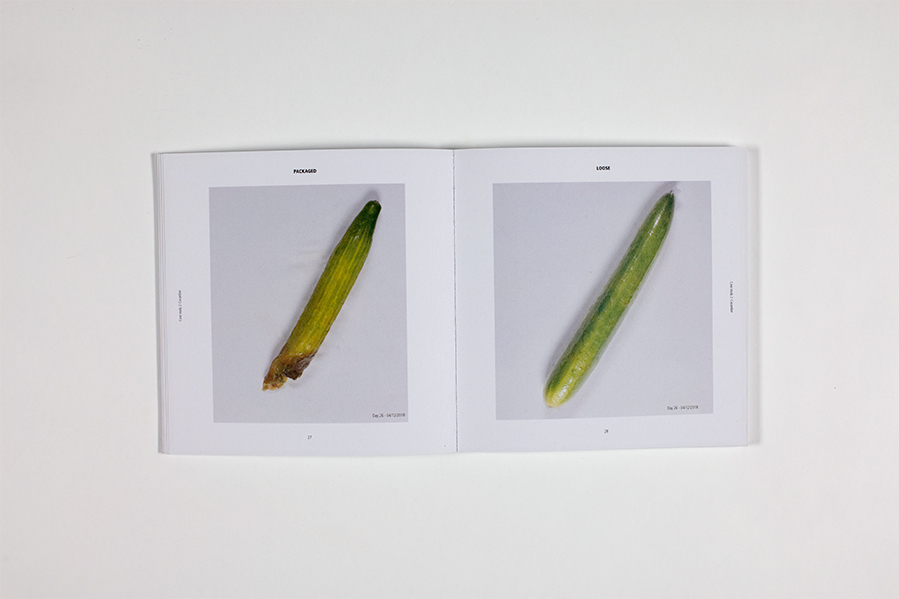
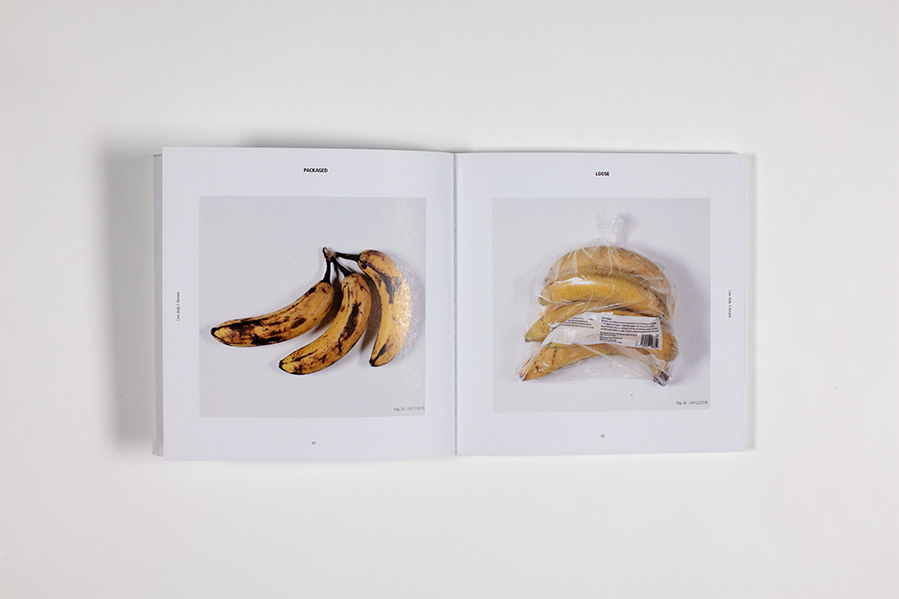
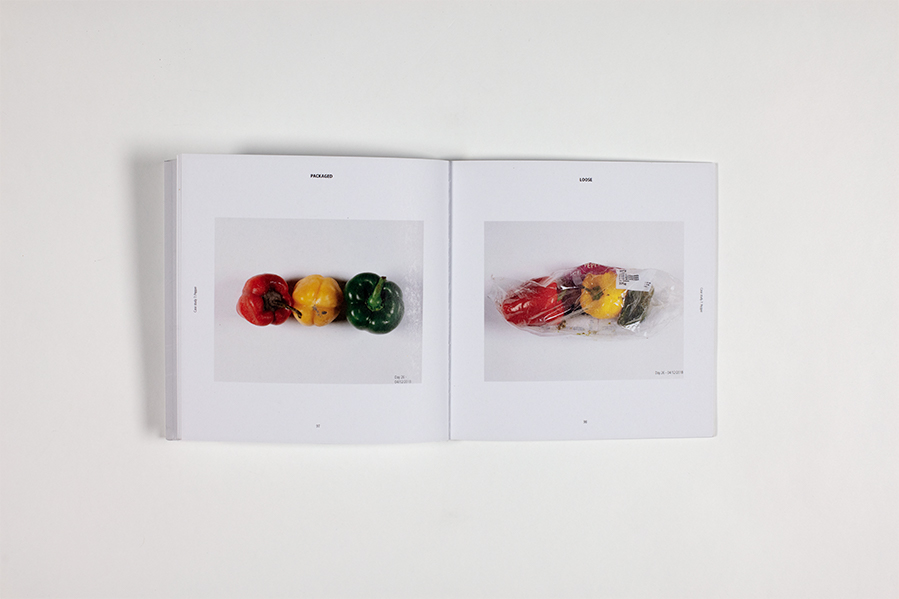
The results were surprising to me. Although plastic has shown great abilities in preserving the lifespan of some foods, it has not succeeded for all of them.
*specific fruits and vegetables were separated depending on their ethylene production level.
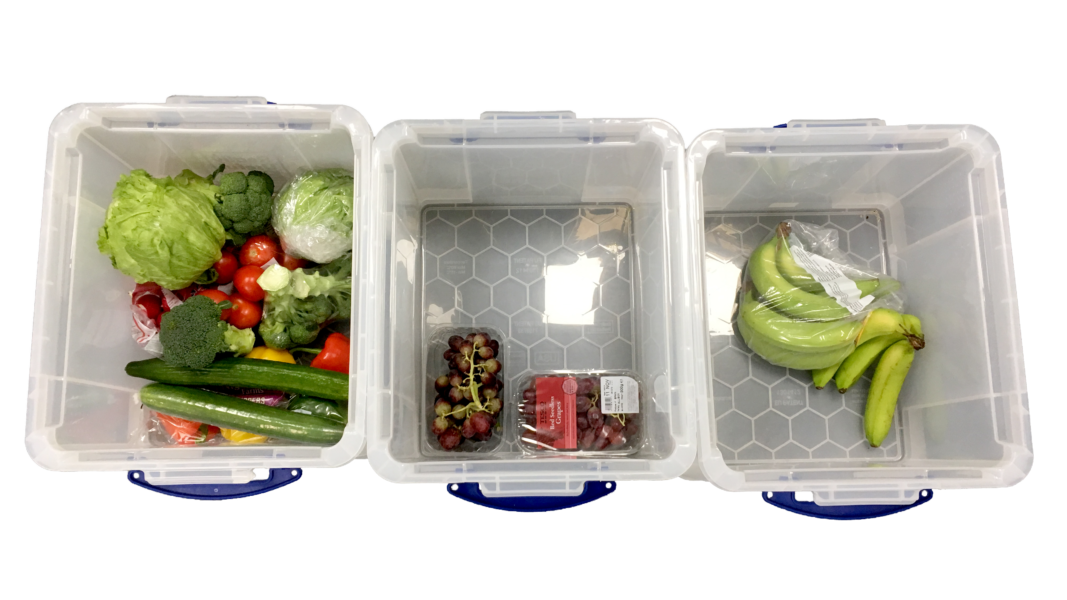
Observation 2
In order to better understand why plastic has rapidly become such a ubiquitous part of our life, I decided to observe its presence in a student kitchen.
As author Susan Freinkel (2011) wrote ‘Plastic is both the miracle and the menace of modern life’. Its lightweight, transparency, low-cost, and hygienic benefits have not only facilitated the consumption of food products but have also transformed the way food items are sold.
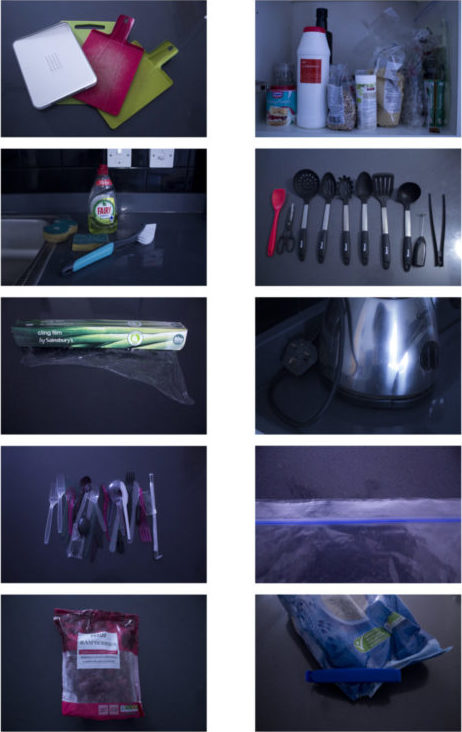
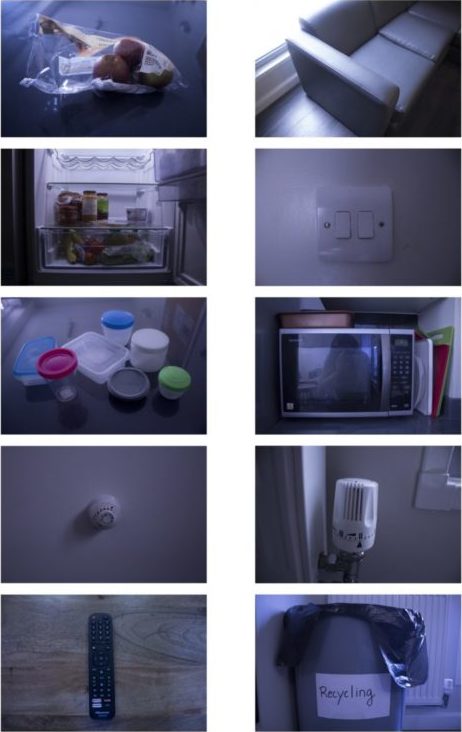
Visual essay
The complexity of most plastics persists in their innocent appearances. The transparencies and often clear blues alludes to the water, the oceans, and the natural. How then can society be aware of the destructive impact of plastics on our planet and our health?
The following images aim to visualise the role of design in influencing our consumption and disposal choices. Throughout the images, I am inviting the audience to reassess their perception of plastic waste. To rethink the strongly embedded values in our language. Plastic has great properties in preserving food and providing hygienic solutions, all while being lightweight. It is time to communicate the other facet of this man-made material. We need to start reversing our engraved visual understanding of plastic.

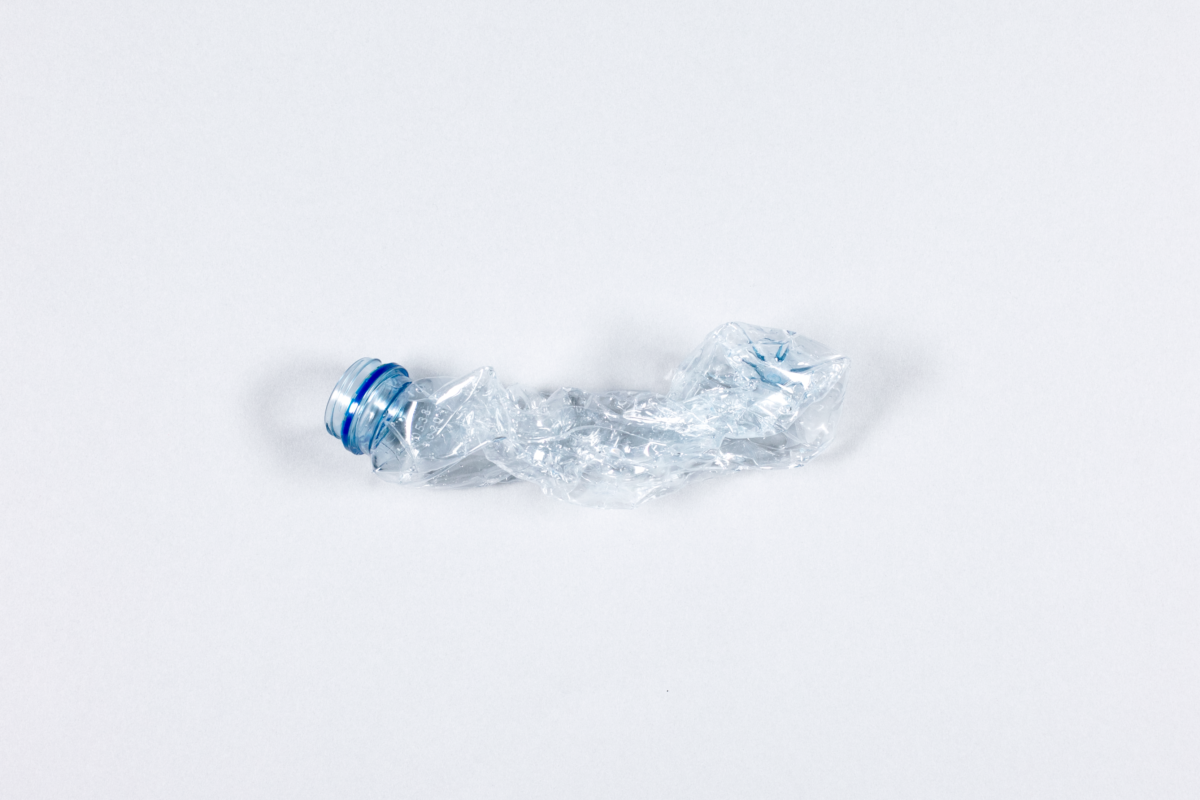
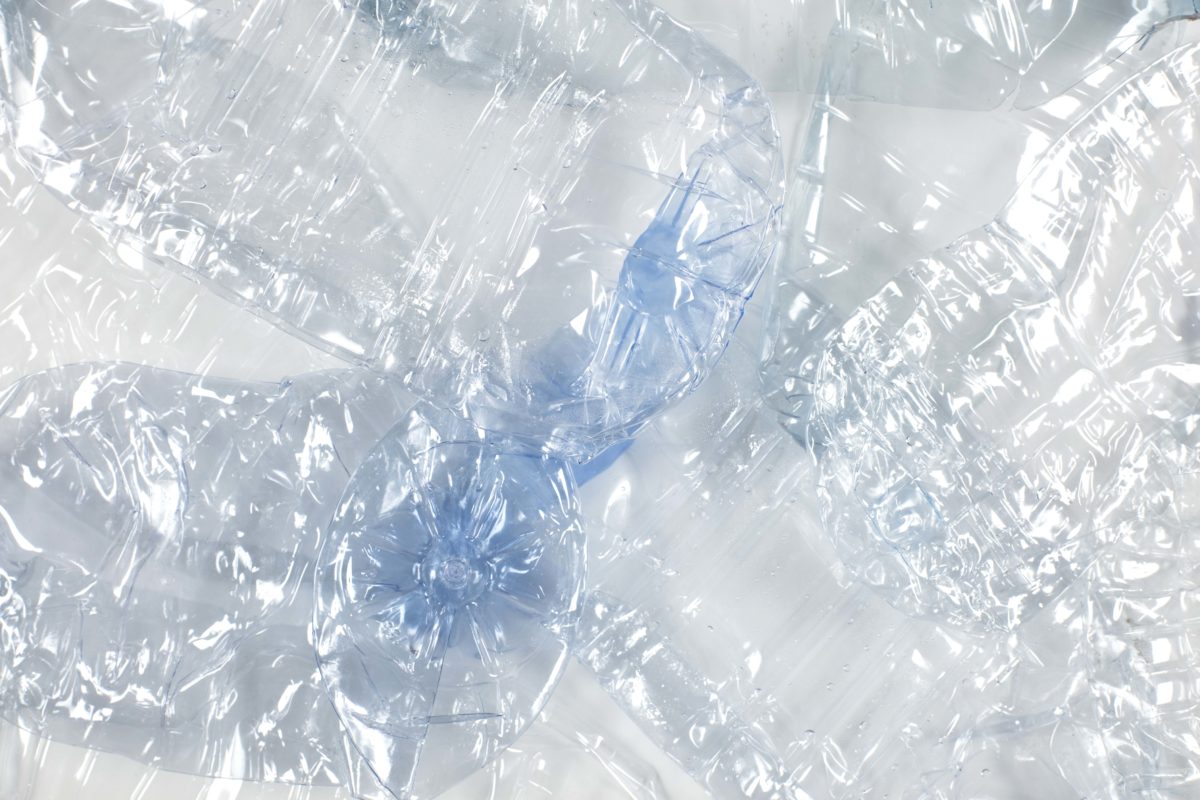

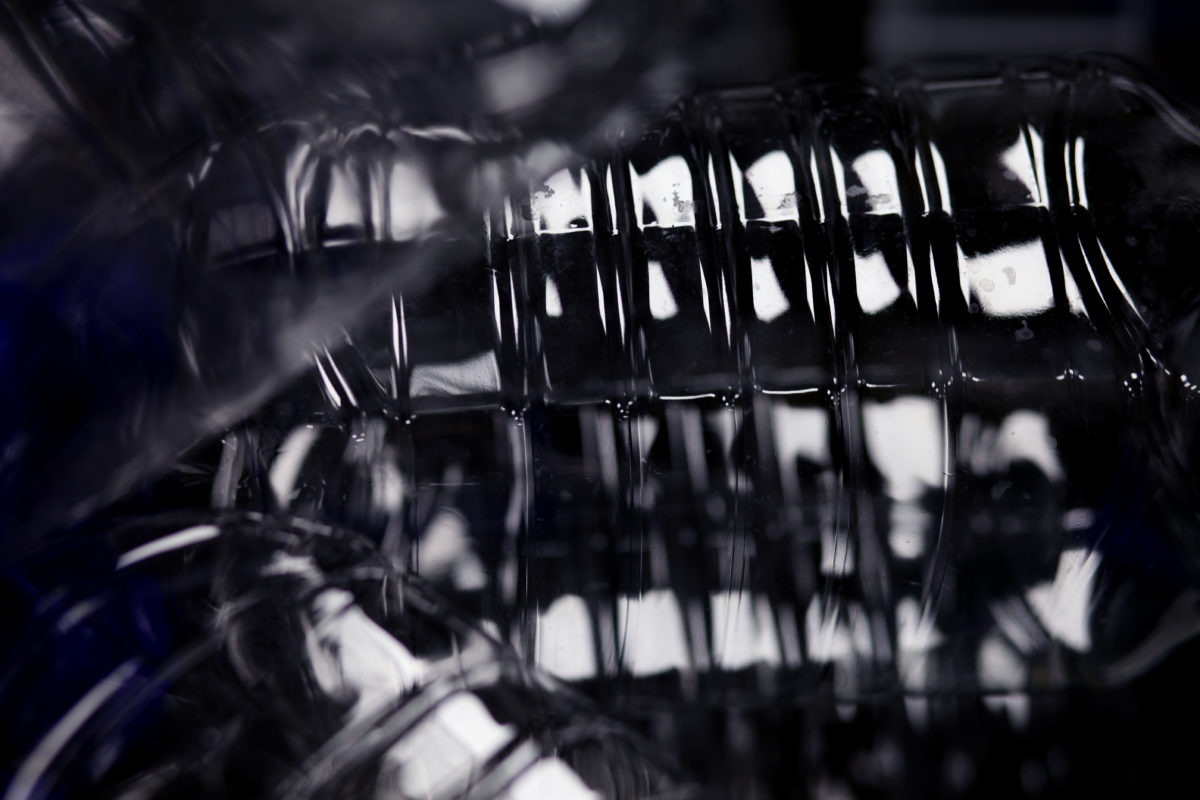
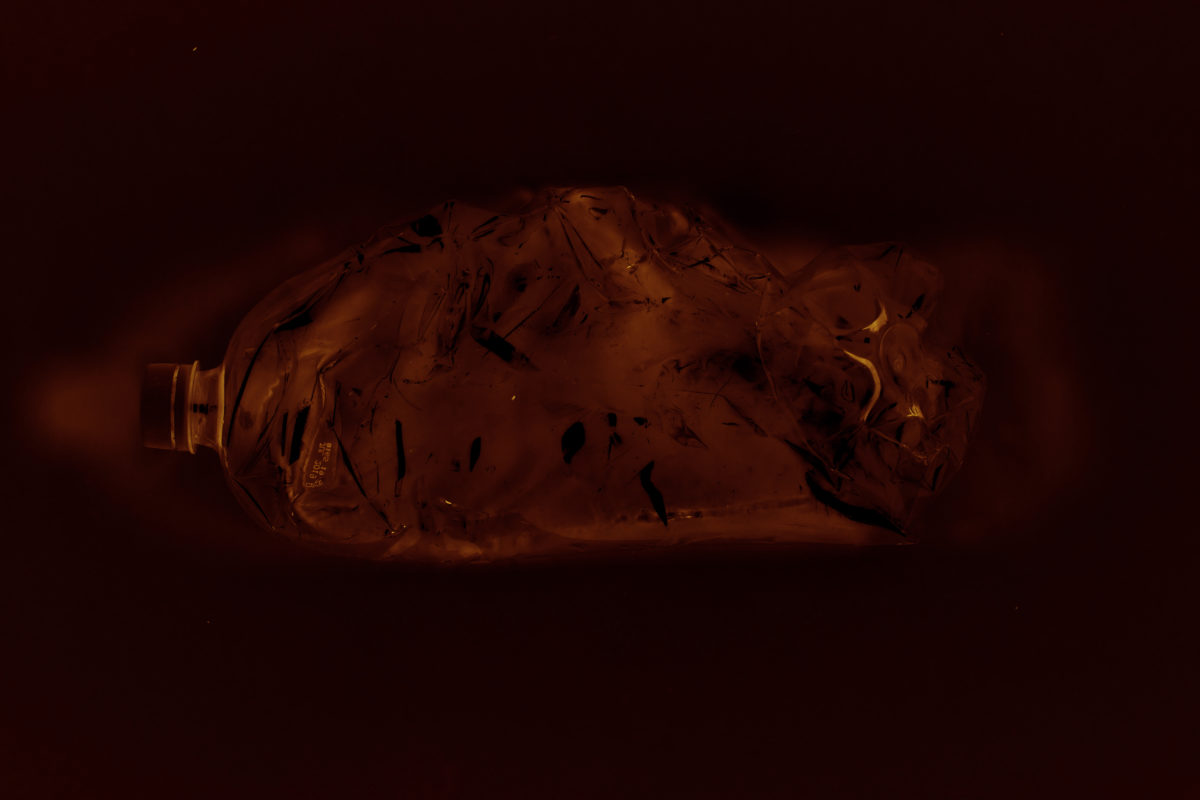
Lost in Plastic
In response to my bachelor thesis, I have created Lost in Plastic, a campaign against plastic pollution. Based on one of the most iconic animated movie, this short animation illustrates the increasing concern of plastic pollution in our oceans. The video was created with the aim to raise awareness and encourage people to rethink their plastic usage. I wanted to highlight how these ordinary objects are occupying our beautiful oceans.
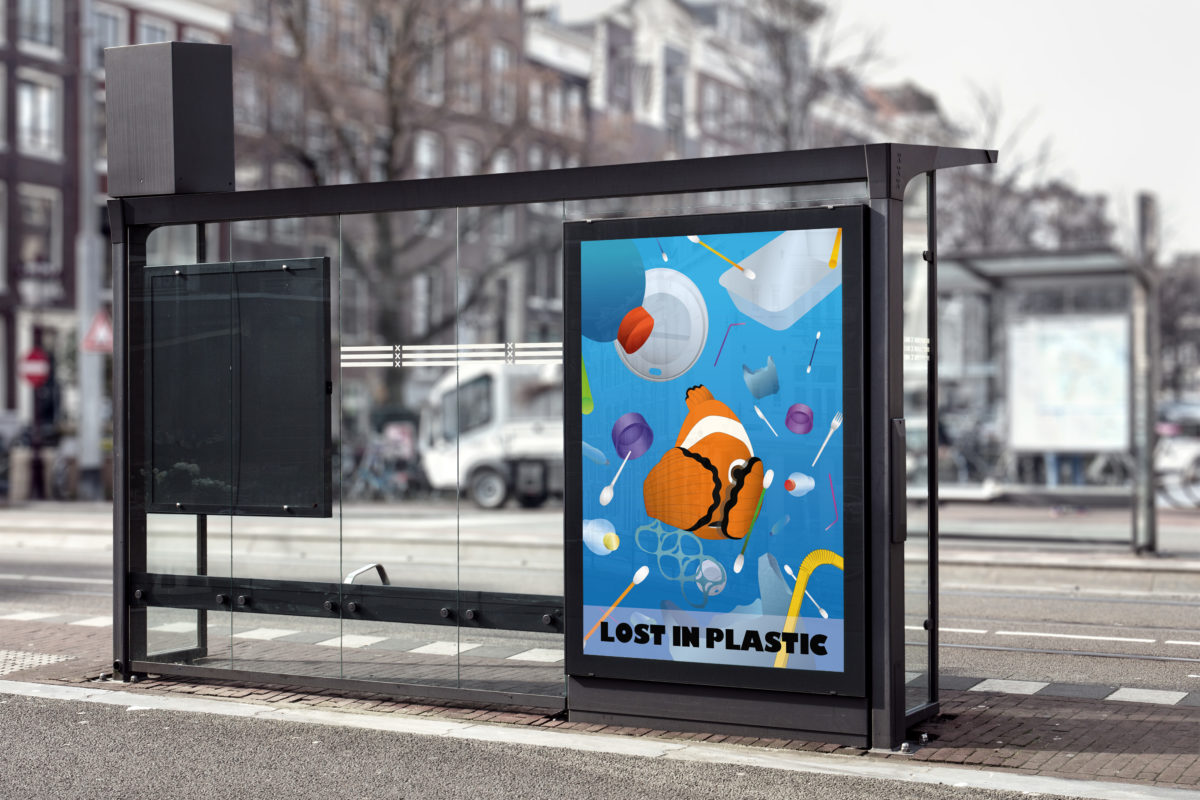
Why Nemo?
Not only is Nemo a well-known film and character, but he is also, for many people a childhood memory (or a renowned Disney character for their own children).
Moreover, the role of the ocean in this animation plays a particularly interesting role. The gap between the vivid colours and the reality of our oceans today was the starting point for this project.
Children, in particular, perceive our oceans as this mysterious natural place where all these colourful fishes and exotic planets live. Many of us are not aware of the impact of plastic waste on our seas.
This essay is not an attempt to solve plastic pollution; neither is it a critique of plastic production or plastic consumption. It is a study of humanity’s relationship to plastic, trying to establish a better understanding of its use.
